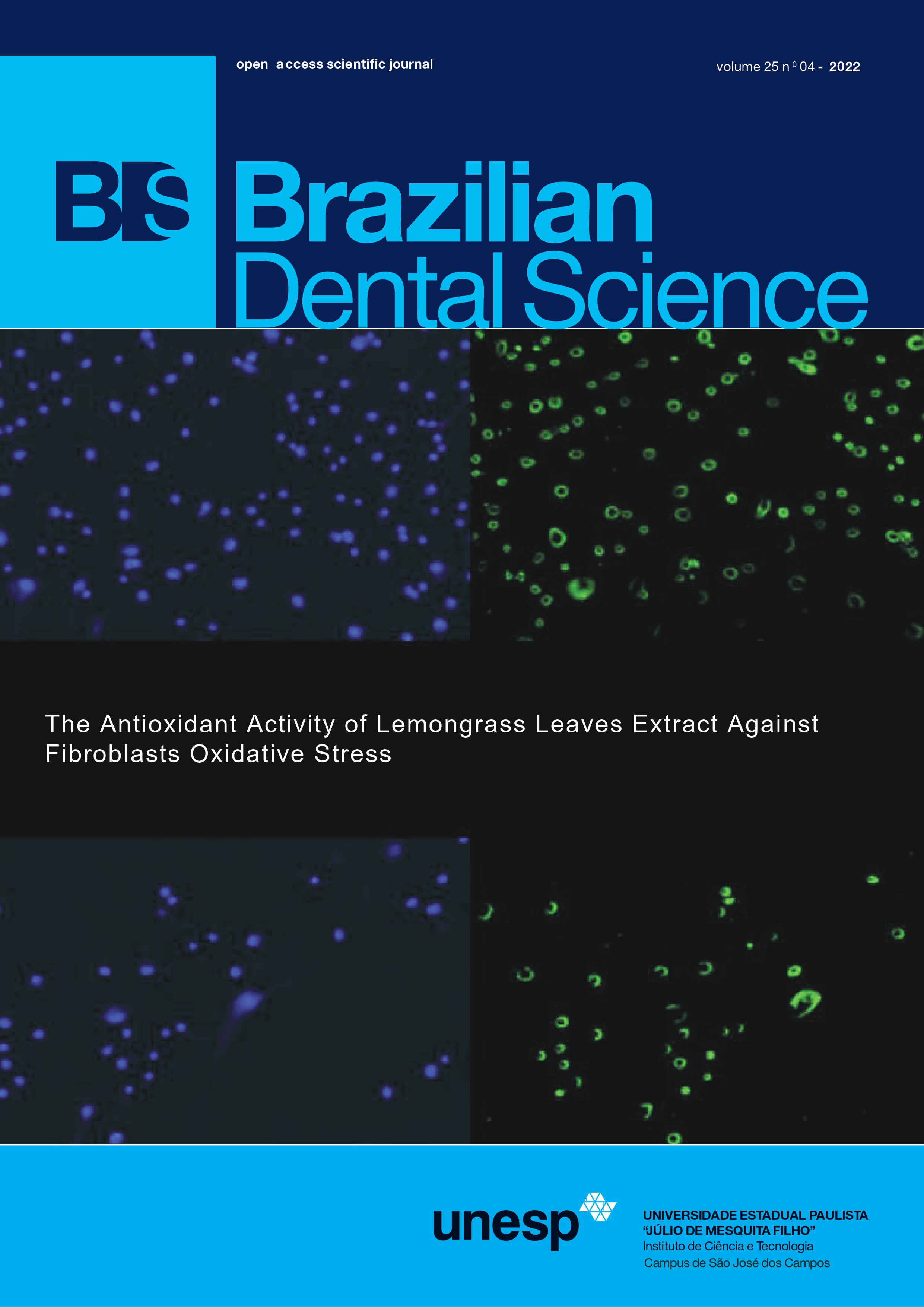A new preheating thermoviscous composite for restoration of non-carious cervical lesions: a 6-month randomized clinical trial
DOI:
https://doi.org/10.4322/bds.2022.e3575Abstract
Objective: This double-blind, split-mouth randomized clinical trial evaluate the clinical performance of a new
preheating (PHT) thermoviscous composite compared to a non-heating (NHT) composite resin in restorations of
non-carious cervical lesions (NCCLs) over a period of 6-month. Material and Methods: 120 restorations were
performed on NCCLs with two restorative materials (n = 60). After prophylaxis, the teeth were isolated with
retraction cord isolation/cotton rolls and one universal adhesive was applied in the selective enamel etching
strategy. For the PHT group heating was carried out at 68°C using a heater bench for 3 min. On the other side, for
the NHT group, no heating was applied. Both restorative materials were placed in the caps dispenser and inserted
in the NCCLs. The restorations were evaluated after 6-month of clinical performance according to the FDI criteria.
Statistical analysis was performed with Chi-square test for all FDI parameters (a = 0.05). Results: Three restorations
only in the NHT group were lost/fractured after six months follow-up. The retention rates (confidential interval
95%) for six months were 97.5% (88.6% - 99.0%) for the NHT group and 100% (93.9% - 100%) for the PHT
group (p > 0.05). Twenty-two restorations (8 for NHT and 14 for PHT) presented small marginal adaptation
defects at the six-months follow-up (p > 0.05). Twenty-six restorations were found to have biofilm retention in
the six-month recall (11 for NHT and 15 for PHT; p > 0.05). Regarding all others FDI parameters evaluated, all
restorations were considered clinically acceptable. Conclusion: The clinical performance of the new preheating
thermoviscous was found to be promise after 6-month of clinical evaluation when applied in NCCLs.
KEYWORDS
Composite resin; Viscosity; Temperature; Clinical trial; Preheating.
Downloads
Downloads
Published
How to Cite
Issue
Section
License
Brazilian Dental Science uses the Creative Commons (CC-BY 4.0) license, thus preserving the integrity of articles in an open access environment. The journal allows the author to retain publishing rights without restrictions.
=================




























